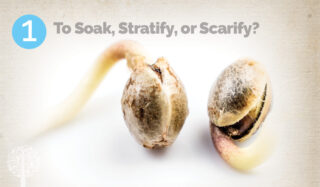Cation Exchange Capacity (CEC) in Coco – A-Grade Hydroponics

The Cation Exchange Capacity (CEC) is a measure of a medium’s ability to hold positively charged ions. This is an important property to manage in your coco/medium as it directly influences coco structure stability, nutrient availability, pH and the mediums reaction to fertilisers. Plants are able to easily access the cations attached to the CEC.
What are exchangeable Cations?
Minerals and organic matter components of your coco/medium have negatively charged sites on their surfaces which adsorb and hold positively charged ions (Cations) by electrostatic force. This electrical charge is critical to the supply of nutrients to plants as many essential elements exists as Cations, such as magnesium, potassium and calcium. Coco/mediums with large quantities of negatively charged sites are more fertile as they can retain more Cations, making the medium much more effective for heavy feeding plants, such as fruiting or flowering plants.
The cations (positively charged ions) most associated with CEC in coco are calcium, magnesium, sodium and potassium. These elements are often referred to as the base cations.
How to measure CEC
Unfortunately measuring the CEC requires equipment that 99% of growers will not have access to, requiring tools to directly measure CEC by analysing coco samples to measure total positive charge in relation to the original coco mass.
CEC is measured and expressed in meq/100g, which is numerically equal to centimoles of charge per kilogram of exchanger (cmol(+)/kg).
Coco Buffering
Buffering your coco is achieved by exposing the cation exchange to a solution of water with a high dose of cations that are important to plant growth: calcium and magnesium. Cations are adsorbed at different rates, calcium and magnesium for example are adsorbed at double the rate as they both have a double-positive charge compared to potassium and sodium which both have a single-positive charge.
Most coco manufacturers will buffer their coco with calcium and a small amount of magnesium to maintain a high CEC range for best results.
Buffering your coco with calcium and magnesium essentially means that when you feed your plants an accurate dose of nutrients, your plant will have access to these elements immediately instead of amending the CEC in the coco.
A growers goal is to create an accurate and balanced nutrient solution to feed to your plants as they need. If you are using an un-buffered coco mix, an accurate and balanced nutrient solution will start to buffer the coco as well as feed the plants, meaning some nutrients will be going into buffering the CEC. This process will end up exchanging potassium and sodium for calcium and magnesium as the double-positive charge of Ca and Mg will release molecules of potassium and sodium as they are single-positive charged cations.
This process will leave the once accurate nutrient solution to now have lowered calcium and magnesium and additional potassium and sodium as a result, altering the equilibrium of the rhizosphere. Sodium is generally an undesirable element and toxic to some plants even at very low ppm. The higher levels of potassium will directly hinder the uptake of magnesium by plants. This is the main issue that will arise when first using unbuffered coco.
With high powered horticultural lighting, if a grower was to leave a plant un-fed or only watered without nutrients in the solution for enough time, the plant would eventually alter the CEC and consume the additional calcium and magnesium, off-setting the CEC to an undesirable range. This will mean the coco will need a new buffer, through the use of a calcium and magnesium supplement, before the next accurately balanced nutrient solution is fed to the plant.
Simple rules for growers to remember
To keep things simple, we often follow these small rules to remind ourselves to make sure our coco is buffered and CEC is at ranges we desire by doing the following:
- Always use pre-buffered coco products.
- If re-using washed coco or if your coco has dried out entirely and no nutrients have been fed to your plant for some time, you will need to buffer your coco once more with a calcium & magnesium supplement before feeding your nutrient solution again.
- After a heavy flush of your pots, buffer your coco again with a calcium and magnesium supplement.




